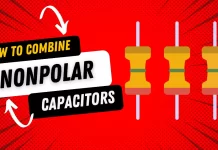And it repeats every 30-35 years
Despite the fact that in general the structure of the Earth is sufficiently clear to scientists, we know far from everything. For example, it is quite possible that the inner core of our planet quite recently, even by human standards, almost stopped its rotation, and perhaps even began to rotate in the opposite direction.

Yi Yang and Xiaodong Song, researchers at Peking University’s SinoProbe Lab at the School of Earth and Space Sciences, published a paper in the journal Nature on their study, which suggests a possible periodicity in the rotation of the Earth’s inner core.
Scientists have been investigating data on seismic waves from earthquakes, which give us information about the internal structure of the planet, since 1960. Their data indicate that the Earth’s inner core may have stopped spinning around 2009. The essence of the study was relatively simple: scientists analyzed repetitive seismic waves and found that in the above period and after it, the trajectories of their propagation, which previously showed significant changes in time, became almost unchanged. From this, the assumption arose that the inner core stopped rotating, thereby removing the factor that led to the changes.
What’s more, the scientists found similar behavior in data from the 1970s. As a result, the conclusion of scientists is that, perhaps, the inner core of the Earth changes the direction of rotation, creating a cycle lasting about 60-70 years. Here it should be noted that, apparently, the cycle does not mean the period of rotation in one direction before the change of direction, but the period between the beginning of rotation in one direction and the return to the same direction. That is, a change of direction occurs every 30–35 years.
Such a cycle correlates well with other phenomena on Earth. For example, global climate changes and ocean level fluctuations are cyclical with approximately the same frequency. There is also a correlation with the length of the day. At the same time, scientists themselves say that the nature of these relationships is still unclear to them. One suggestion is that the gravitational connection between the core and the mantle can cause slight deformation of the Earth’s surface, which entails changes in the ocean level, which, in turn, can lead to climate changes.
It is believed that the core of the Earth consists of two parts: the inner metal core and the outer liquid core, which acts as a “shell” for the inner one.




